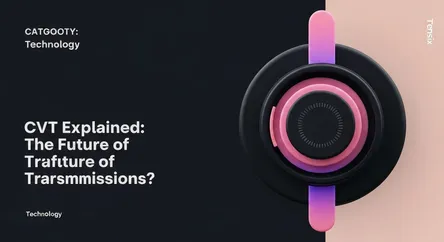Technology
CVT Explained: The Future of Transmissions?

Discover Continuously Variable Transmissions (CVTs). Learn how this innovative gearbox technology works to improve fuel efficiency and provide smoother drives.
What is it?
A Continuously Variable Transmission (CVT) is a type of automatic transmission that can change seamlessly through an infinite number of gear ratios. Unlike traditional automatics with a fixed number of gears, a CVT typically uses a system of two variable-diameter pulleys connected by a steel belt or chain. This design allows the engine to operate at its most efficient revolutions per minute (RPM) for a range of vehicle speeds. The result is a smooth, single-speed experience that optimizes both fuel consumption and power delivery without the distinct steps of a conventional gear shift.
Why is it trending?
The primary reason for the growing popularity of CVTs is the relentless industry push for better fuel economy and lower emissions. By allowing the engine to stay in its most efficient power band more often, CVTs help vehicles meet increasingly strict government regulations. Automakers in the economy and mainstream segments have widely adopted this technology to boost their fleet's overall MPG ratings. Furthermore, the smooth, shiftless acceleration is a key selling point for many consumers who prioritize a comfortable and refined driving experience for daily commuting.
How does it affect people?
For the average driver, a CVT means a smoother ride and fewer trips to the gas station. The acceleration is linear and uninterrupted, which is ideal for city traffic. However, some drivers dislike the sensation, occasionally described as a 'rubber-band effect,' where engine RPMs rise and hold steady while the car's speed catches up. To counter this, many modern CVTs are programmed with simulated 'shift points' that mimic the feel of a traditional automatic transmission, giving drivers a more familiar experience while retaining the efficiency benefits.